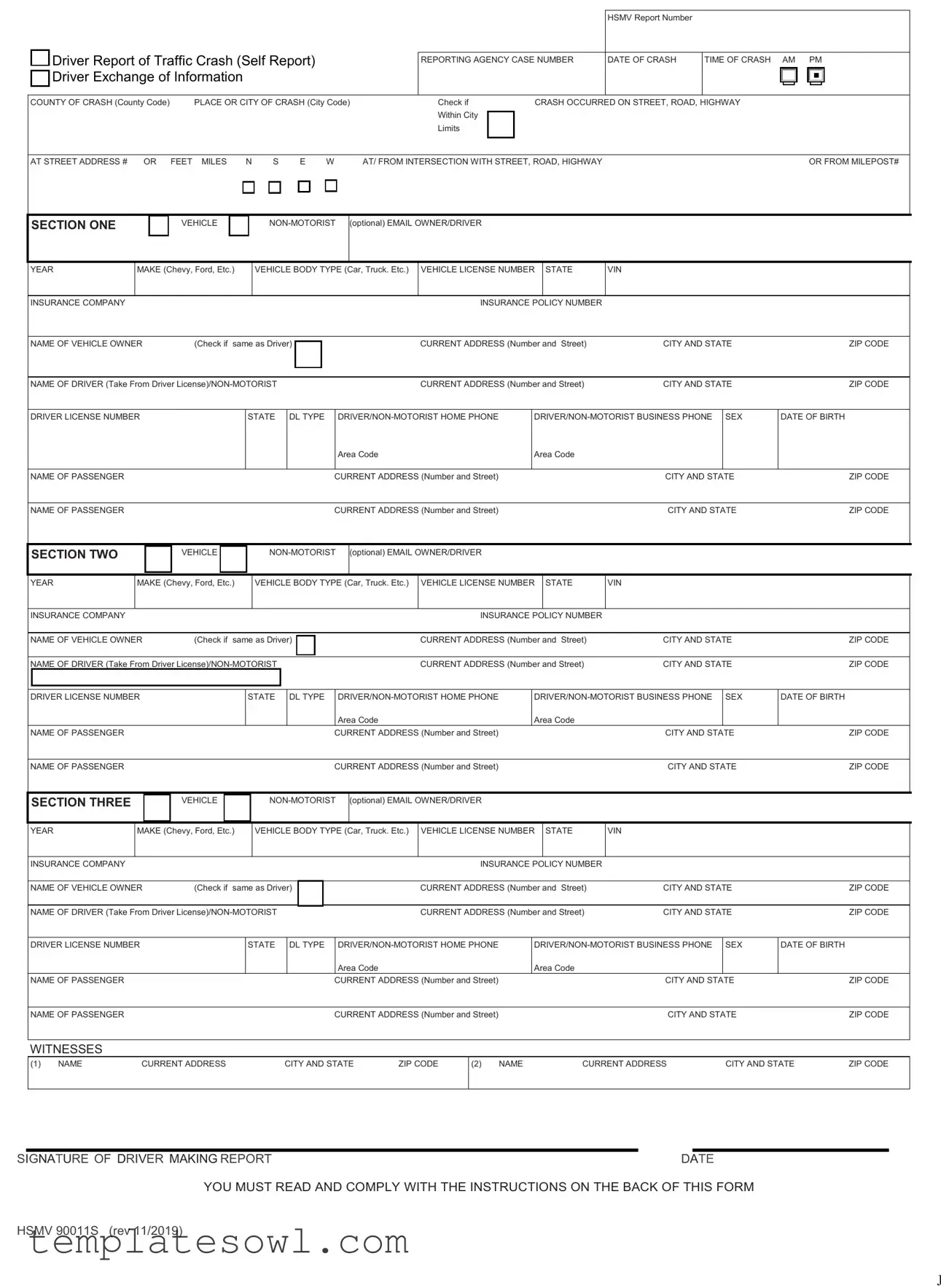What is the Florida Traffic Crash Report form used for?
The Florida Traffic Crash Report form is used to document accidents that do not require a law enforcement report. If you're involved in a crash that resulted in damage to vehicles or property, you must submit this report within 10 days of the incident.
Who is required to fill out the report?
The responsibility to complete the report typically falls on the driver of the vehicle involved in the crash. If multiple vehicles are involved, each driver must file their own report to ensure all information is documented accurately.
What information do I need to provide on the form?
The form requires essential information including the date and time of the crash, location details, descriptions of all vehicles involved, driver information, and the insurance details. You'll also need to provide names and addresses of any passengers and witnesses.
Where should I submit the completed form?
You can submit the completed form via email to SelfReportCrashes@flhsmv.gov. Alternatively, you can mail it to the address provided on the form, which is the Florida Highway Safety & Motor Vehicles Self Report Crash Team in Tallahassee.
Do I need to sign the report?
Yes, it is essential to sign the report at the bottom of the front page. Your signature indicates that the information provided is true and accurate to the best of your knowledge.
What if there are multiple vehicles involved?
If your crash involved multiple vehicles, each driver should complete a separate report. You can use additional pages to list other involved parties, ensuring each vehicle and driver is documented correctly.
How can I obtain a copy of the report once submitted?
Once you submit your report, make sure to keep a copy for your records and for insurance purposes. The Florida Highway Safety & Motor Vehicles may provide you with confirmation, but it’s a good practice to hold on to your copy as evidence of the filing.
What should I do if I need to make changes to the report after submission?
If you need to amend any information on the report after it has been submitted, it's best to reach out directly to the Florida Highway Safety & Motor Vehicles for guidance on how to properly update your submission.
Are there any additional instructions I need to be aware of?
Yes, it’s crucial to read and comply with the instructions that appear on the back of the report form. Following these instructions will help ensure that your report meets all necessary requirements and is handled properly by the department.


 Driver Report of Traffic Crash (Self Report)
Driver Report of Traffic Crash (Self Report) 
 Driver Exchange of Information
Driver Exchange of Information